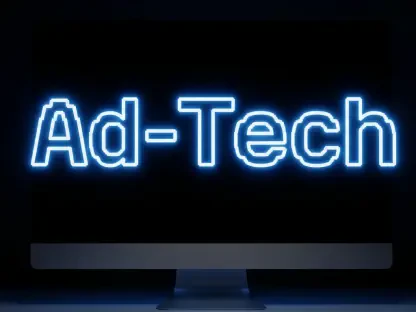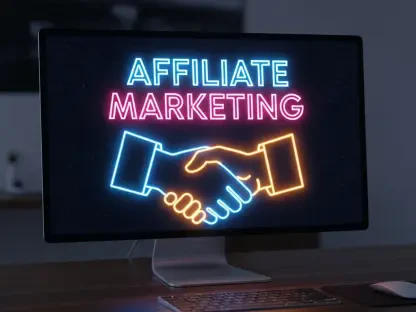I’m thrilled to sit down with Anastasia Braitsik, a global leader in SEO, content marketing, and data analytics. With her deep expertise in digital strategies, Anastasia has been at the forefront of integrating human creativity with cutting-edge technology. Today, we’re diving into the world of Artificial Intelligence Optimization (AIO), exploring how this innovative approach is reshaping content creation. We’ll discuss the synergy between human insight and AI precision, the challenges of relying solely on automated tools, and how platforms and agencies are leading the charge in this space. Let’s uncover how AIO is setting a new standard for authentic, impactful content.
Can you break down what Artificial Intelligence Optimization, or AIO, means to you in a way that’s easy to understand?
Absolutely. AIO, at its core, is about blending the best of human creativity with the efficiency of AI. Unlike older AI tools that just churn out text, AIO focuses on optimizing content through collaboration. AI handles the heavy lifting—like research or structuring data—while humans add the personal touch, like emotion, brand voice, and context. It’s about making content that’s not only efficient to produce but also meaningful and engaging for the audience.
How does AIO stand out from the AI writing tools we’ve seen before?
The big difference is the human element. Older AI tools often worked in isolation, spitting out text that could feel robotic or generic. AIO, on the other hand, is a partnership. It’s designed to empower creators by letting AI do the repetitive stuff—think keyword analysis or drafting outlines—while humans guide the tone, refine the story, and ensure it resonates. This hybrid approach creates content that performs well technically, like in search rankings, but also connects on a personal level.
Why do you believe AIO is a stronger method than letting AI handle content creation entirely on its own?
AI is incredible for speed and scale, but it lacks soul. It can’t fully grasp nuances like humor, cultural context, or emotional depth. AIO is stronger because it leverages AI’s strengths—data processing and structure—while relying on humans to inject personality and intent. This balance means content isn’t just functional; it builds trust and engagement with readers, which is something pure AI often misses. It’s about creating something that feels alive, not just algorithm-friendly.
What do you see as the greatest benefit of merging human creativity with AI’s precision in crafting content?
The biggest benefit is authenticity at scale. With AIO, you can produce high volumes of content quickly, thanks to AI, but still maintain a genuine voice and connection, thanks to human input. This means brands can meet the demand for constant content without sacrificing quality or relatability. It’s a game-changer for building trust with audiences while staying competitive in fast-paced digital spaces.
What are some common issues you’ve observed with content that’s purely AI-generated, without any human oversight?
Pure AI content often falls flat in a few key areas. It can lack originality, sounding repetitive or overly generic. It also struggles with accuracy—sometimes pulling outdated or incorrect data. Most importantly, it misses emotional resonance. I’ve seen AI write perfectly structured articles that just don’t connect because there’s no heart or unique perspective. Without human oversight, it risks alienating readers who crave something real.
Why do you think AI has a hard time capturing elements like emotion or humor in writing?
AI operates on patterns and data, not lived experience. It can mimic styles or tones by analyzing tons of text, but it doesn’t feel emotions or understand the subtleties of humor, which often rely on cultural context or personal quirks. For example, a joke might need timing or a specific reference that AI just doesn’t get. It’s not wired to empathize or think outside the box the way humans do, so those deeper layers often get lost.
Can you share an example of AI-generated content that felt disconnected from its audience, and what stood out about it?
I once reviewed an AI-written blog post for a lifestyle brand. On paper, it was flawless—perfect grammar, solid structure. But it felt like a template. The language was so generic that it could’ve been about any brand, anywhere. There was no warmth, no specific anecdotes or insights that made it relatable. It didn’t speak to the audience’s values or experiences, so it just fell flat. That’s the kind of disconnect that happens when there’s no human touch to ground the content.
How does incorporating human input in AIO help overcome these challenges with audience engagement?
Human input brings the missing piece—connection. People can infuse content with personal stories, emotional depth, or a unique voice that reflects the brand or audience. In AIO, humans take AI’s raw output and shape it to feel authentic, whether that’s tweaking the tone to be conversational or adding a relatable example. This ensures the content doesn’t just inform but also builds a bond with readers, making them more likely to engage and trust the message.
Can you explain how certain tools use an interview-based system to blend human input with AI for content creation?
Sure, some innovative platforms take a conversational approach to AIO. They work by having users answer intuitive questions about their topic, almost like a casual chat. The tool then uses those responses—full of personal insights and natural language—to create structured, optimized content. It’s a brilliant way to capture a creator’s voice while letting AI handle the formatting and technical optimization. This method saves time and keeps the output feeling genuine.
What makes this interview-based approach unique in the content creation process?
What sets it apart is how it prioritizes the creator’s raw ideas and tone right from the start. Instead of wrestling with prompts or editing stiff AI drafts, you’re just talking about what you know. The system transforms that into polished content without losing the essence of your voice. It’s a seamless bridge between human thought and AI execution, making the process feel more natural and less like a tech chore.
How do these tools ensure that the content retains a person’s natural voice or style?
They focus on capturing your direct input—your words, your phrasing—through the interview process. By building content around your answers, the tool preserves your unique style rather than forcing a generic template. Some platforms even analyze past content or feedback to align with your tone over time. It’s all about making sure the final piece sounds like you, not like a machine tried to guess who you are.
Who do you think gains the most from using such AIO tools in their work?
Honestly, a wide range of people benefit, but I’d say professionals and businesses with limited time stand out. Thought leaders, like executives or experts, can share their knowledge without spending hours writing. Small businesses or solo creators also win because they get high-quality content without needing a big budget or team. It’s especially valuable for anyone who wants to maintain authenticity while scaling their output—efficiency without the cookie-cutter feel.
How do agencies leverage AIO to support businesses with their content and marketing goals?
Agencies use AIO to create smarter, more targeted content strategies. They combine AI’s ability to analyze data—like audience trends or SEO performance—with human expertise in storytelling and branding. This means they can produce content that’s not only optimized for visibility but also aligned with a business’s goals and audience psychology. It’s about delivering results faster, whether that’s through blog posts, social campaigns, or ads, while keeping everything cohesive and impactful.
What kinds of strategies do these agencies prioritize when integrating AIO with areas like SEO or social media?
They often focus on a holistic approach. For SEO, they use AI to identify high-performing keywords and structures, while humans craft narratives that add depth beyond just ranking. In social media, AIO helps generate engaging captions or visuals quickly, but strategists ensure the messaging fits the platform’s vibe and audience. The priority is always relevance—making sure every piece of content serves a purpose, whether it’s driving traffic, building trust, or sparking conversation.
Why is having a strategic mindset crucial when using AIO, instead of just relying on the tech alone?
Technology without strategy is like a car without a map—you might move fast, but you’re not going anywhere meaningful. A strategic mindset ensures AIO is used with intent, aligning content with specific goals like brand identity or audience needs. Without that, you risk producing generic output that doesn’t stand out. Strategy guides the tech to create content that’s purposeful, not just plentiful, and that’s what drives real results.
Can you walk us through the typical steps of an AIO workflow from start to finish?
Of course. It usually begins with research and discovery, where humans set the goals, define the audience, and outline the tone. Next, AI steps in to draft a base—think structured content with data or keywords. Then comes human enhancement, where writers refine the flow, add emotion, and weave in storytelling. After that, there’s optimization for things like SEO or readability, often a mix of AI tools and human checks. Finally, performance analysis happens—both AI and humans review engagement data to learn and improve for next time. It’s a true collaboration at every stage.
How do humans and AI divide their roles in this workflow, and what tasks are each best suited for?
AI excels at data-driven tasks—things like researching trends, generating outlines, or optimizing for search engines. It’s fast and precise with repetitive or analytical work. Humans, meanwhile, are best at the creative and emotional side—shaping narratives, adding personal flair, and ensuring the content feels authentic. Humans also handle final judgment calls, like adjusting tone or catching cultural nuances AI might miss. It’s a complementary split where each plays to their strengths.
Why is the human refinement step so important after AI generates the initial content?
Human refinement is crucial because it turns a functional draft into something memorable. AI might create a solid foundation, but it often lacks the polish or depth that makes content stand out. Humans add the subtle touches—adjusting phrasing, weaving in relatable details, or ensuring the message aligns with the brand. This step bridges the gap between technical accuracy and emotional impact, making sure the content doesn’t just exist but truly connects.
Looking ahead, what is your forecast for the future of AIO in content creation and marketing?
I see AIO becoming even more intuitive and personalized. As technology evolves, platforms will better learn from human feedback, adapting to individual tones and preferences with incredible accuracy. I envision AI assistants that can almost predict your style or intent, crafting content that feels like an extension of you while still optimizing for performance. It’s already starting to happen, and in the next few years, I think AIO will be the standard for anyone serious about creating impactful, scalable content. It’s an exciting time to be in this space.









